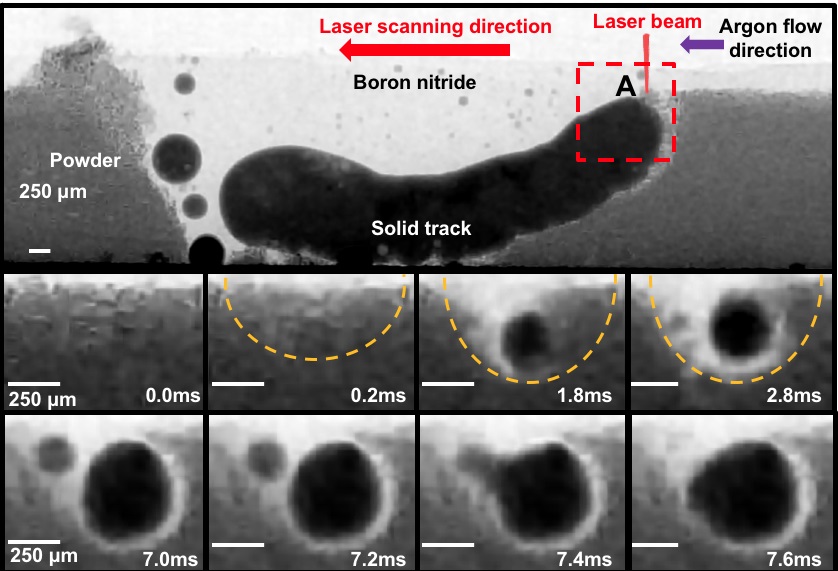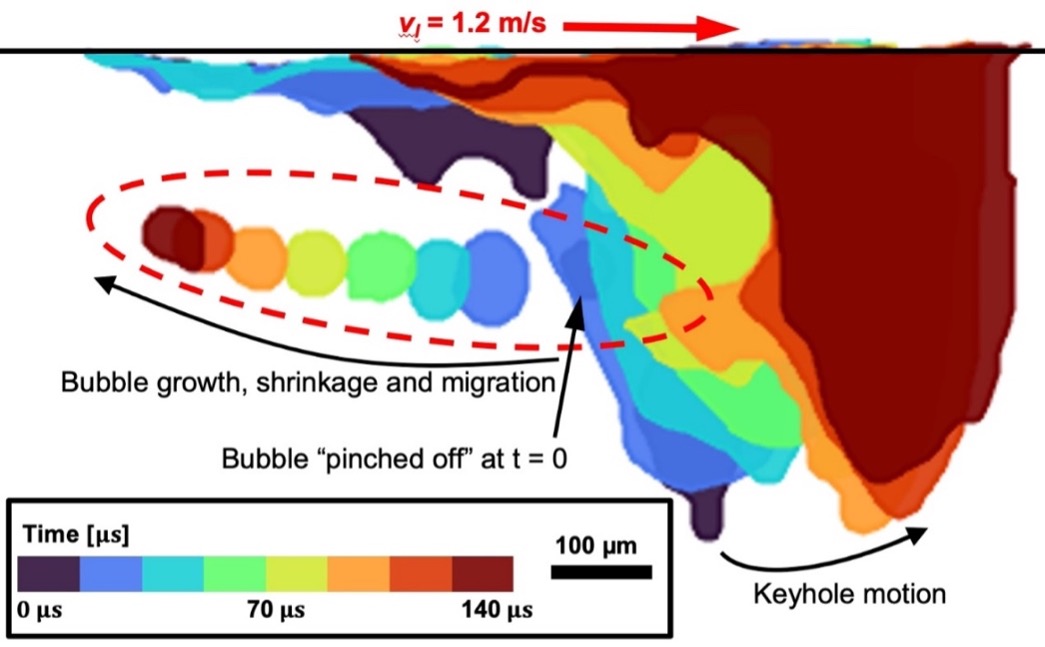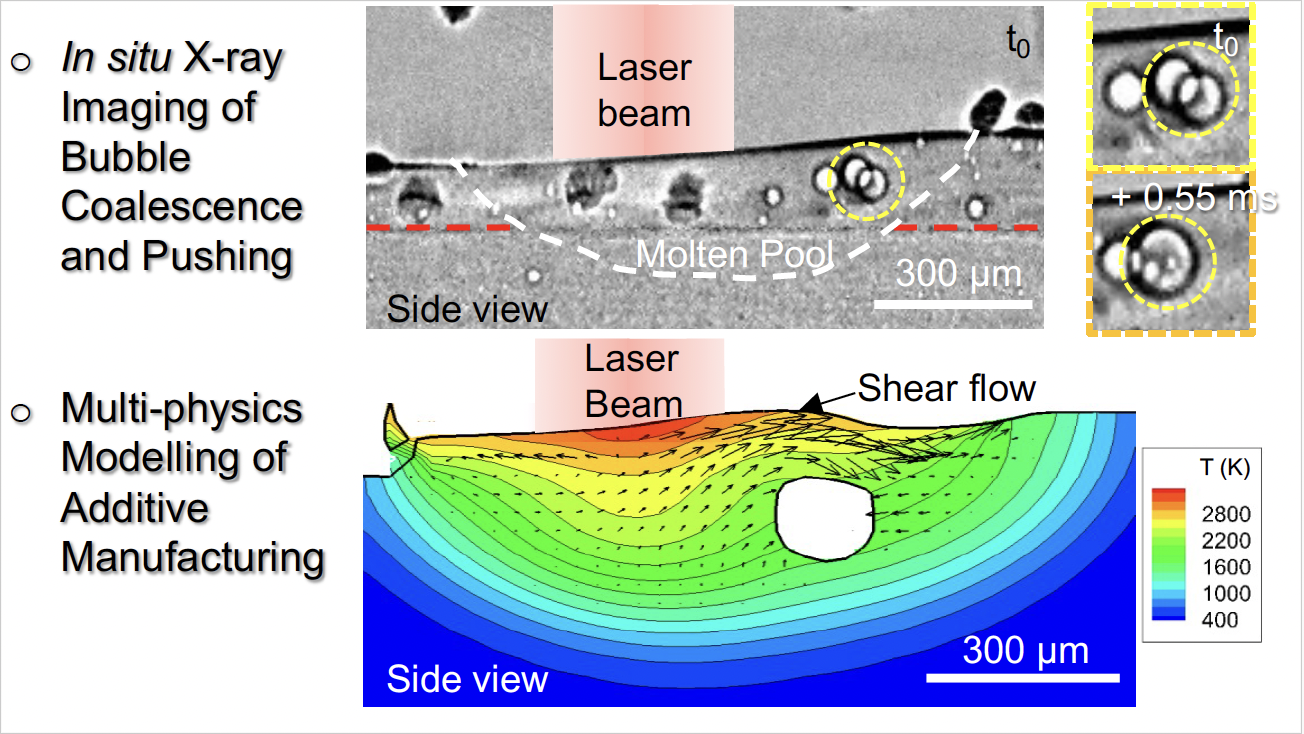All Publications /
Publications:
In situ X-ray imaging of defect and molten pool dynamics in laser additive manufacturing.
02 / 05 / 18
Paper: In situ X-ray imaging of defect and molten pool dynamics in laser additive manufacturing.
Publication: Nature Communications, 9, 1355 (2018)
Authors: Chu Lun Alex Leung, Sebastian Marussi, Robert C. Atwood, Michael Towrie, Philip J. Withers, Peter D. Lee.
Laser additive manufacturing (LAM) uses a laser to fuse together metallic, ceramic or other powders into complex 3D shapes, layer by layer. The cooling rates are extremely rapid, and since they are unlike conventional processes we don’t know the optimal conditions to obtain the best properties, delaying the uptake of LAM in the production of safety-critical engineering structures, such as turbine blades, energy storage and biomedical devices.
We need a method to see inside the process of LAM to better understand and optimise the laser-matter interaction and powder consolidation mechanisms.
For this research, the team created a novel LAM process replicator, the LAMPR, which allows them to image and quantify the formation of the melt track as the layers are printed during AM.
The LAMPR was designed to fit on the beamline, at Diamond Light Source, the UK’s national synchrotron, and mimics a commercial LAM system, with windows that are transparent to X-rays, allowing scientists to see right into the heart of the LAM process as it takes place.
They used X-ray radiography with high temporal and spatial resolution to uncover key mechanisms of laser-matter interaction and powder consolidation during LAM, including the formation and evolution of melt tracks, spatter patterns, the denuded zone (a powder-free zone) and porosity in the deposited layers. The time-resolved quantification of the pore and spatter movements gave crucial information of their flow velocities and direction, which are not possible to acquire using other techniques.
The results of these experiments clarify aspects of the physics underlying LAM, which are crucial for its development. The previous hypothesis was that the formation of surface porosity on finished objects was due to incomplete melting or insufficient liquid feeding. However, this research shows that it is formed via a pore-bursting mechanism. Pores near the surface escape into the atmosphere, leaving behind a surface depression.
Further, the team’s results reveal that the continuous track of melted material often occurs via pre-melting ahead of the main track, driven by surface tension (Marangoni flow), before merging into the main track. Metal vapour and heating of inert gas is a potential source of defects, forming a plume which ejects powder and molten droplets away from the main track.
By enabling varying process conditions to be studied, the LAMPR allowed the team to create a process map which illustrates how to tune the LAM process to produce a quality product with minimal trial and error. Unlike a traditional process map, synchrotron imaging produces a mechanism map, which reveals the fundamental physics limiting the process window. This enables the alloy, conditions or even process to be altered to overcome the restrictions and obtain a more efficient processing environment.
This methodology sheds new light on the mechanisms of pore formation, including the migration, dissolution, dispersion, and bursting of pores during LAM, and future investigations in these areas will deepen our fundamental understanding of the nature of the laser-matter interaction.
Click here to view the paper.

More:
Publications
-

-
X1 Case Study B (UCL)
Impact of powder oxidation during additive manufacturing
Investigators: Prof Peter Lee
Researchers: Prof Chu...

